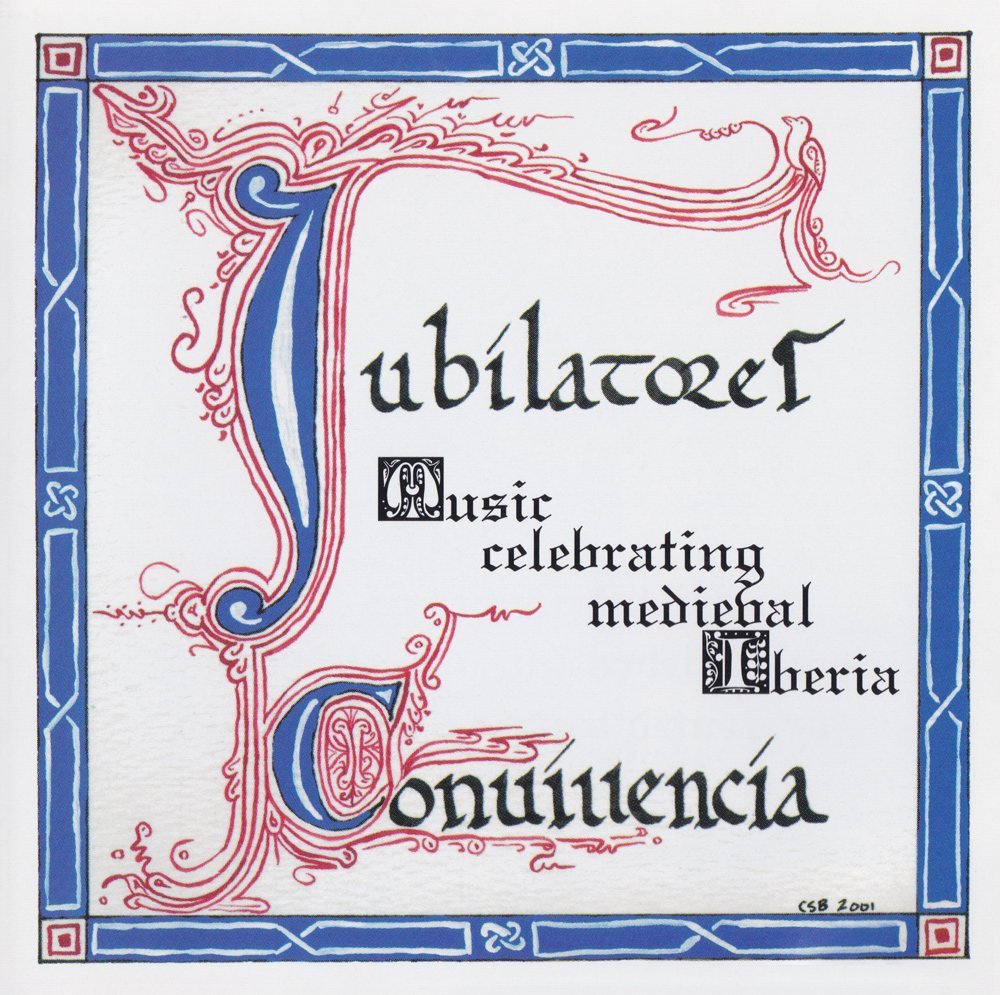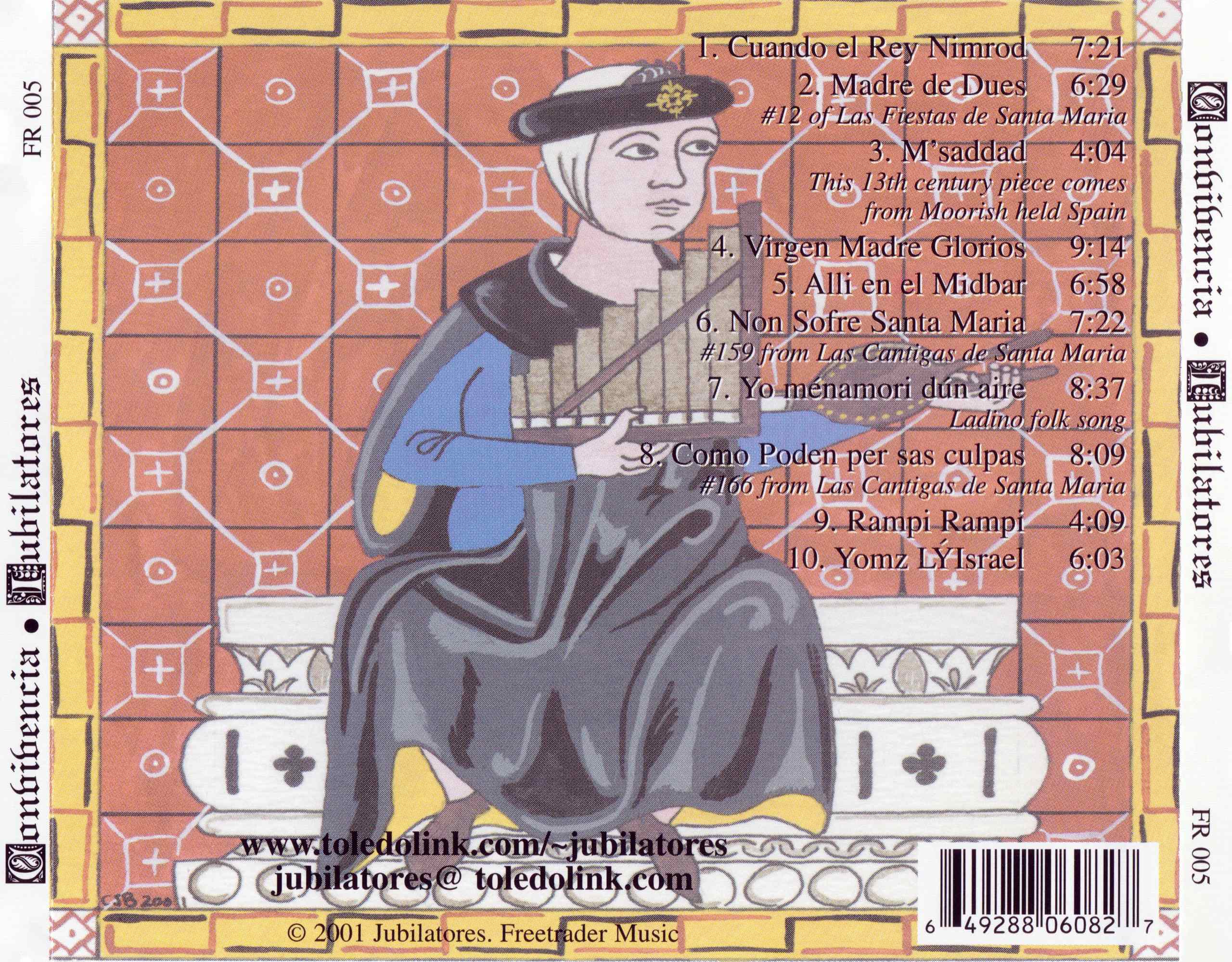
worldcat.org
Freetrader Music FR 005
2001
1. Cuando el Rey Nimrod [7:21]
2. Madre de Deus [6:29] CSM 422
#12 of Las fiestas de Santa Maria
3. M'saddad [4:04]
This 13th century piece comes from Moorish held Spain
4. Virgen Madre Gloriosa [9:14] CSM 340
5. Alli en el Midbar [6:58]
6. Non sofre Santa Maria [2:24] CSM 159
#159 from Las cantigas de Santa Maria
7. Yo m'enamori d'un aire [8:37]
Ladino folk song
8. Como poden per sas culpas [8:09] CSM 166
#166 from Las cantigas de Santa Maria
9. Rampi rampi [4:09]
10. Yomz lý Israel [6:03]
Jubilatores
Robert Brett: percussion
Teresa Brett: portative organ, percussion
Barry Ebersole: lute, psaltery, fyddle, guitarra latina, guitarra moresca ...
Charissa Ebersole: recorder, flute, shwam, dulz[a]ina, percussion, voice
Shoshannah Ebersole: fyddle, voice
David Nelson: lute, percussion, voice
Recorded on location at Freetrader Sutido. Ann Arbon, MI.
Engineered and Mastered by Barry Ebersole.
Original cover illustrations by Chrles S. Burton.
The illustrations depict members of the Jubilatores in the style of Las Cantigas de Santa Maria manuscript, from the court of Alfonso X.
Graphic production & audio replication: World Class Tapes, Ann Arbon, MI.
Thanks to Curtis Bouterse, Louis 'Pete' Peterman, Geofrrey Adams, David Brewer,
John Berberian, Carlos Montoya, Jose Ramirez, James Meadows, Jim French,
all of Shoshannah's friends at CMU, John Brett, Evon Stemm,
All at World Class Tapes, Uncle Mafufo,
and our faithful scribe Tarik.
Convivencia
Music celebrating medieval Iberia
presented by the Iubilatores
